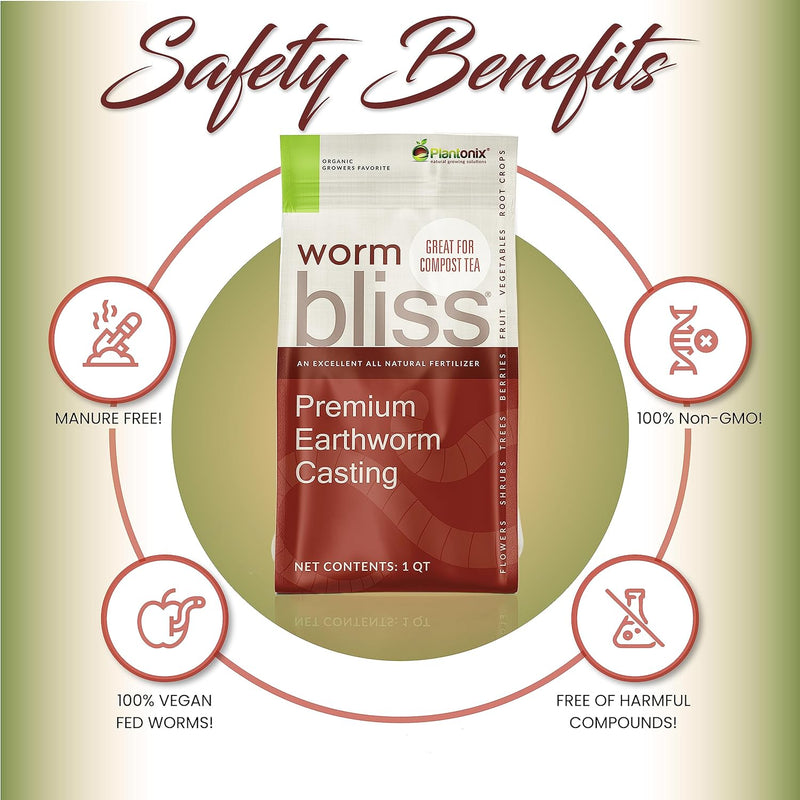North Carolina Worms - An Overview
North Carolina Worms - An Overview
Blog Article
An Unbiased View of North Carolina Worms
Table of ContentsNorth Carolina Worms - TruthsThe Only Guide to North Carolina WormsNorth Carolina Worms for DummiesNorth Carolina Worms for BeginnersThe Greatest Guide To North Carolina Worms
Example: 1-gallon of worm spreadings to 4 gallons of potting mix. 1/2 cup in the bottom of the growing hole for smaller sized plants. 1 cup for larger plants.We discover that worm spreadings are not actually needed for seed starting., advertises better germination rates and plant health and wellness.
The enhancement of tea can additionally include increased microbial biomass to your soil. Pet Feed. You can always side-dress your plants with worm castings any time. Simply bear in mind, the microbes will die if revealed to UV rays (Sunlight), so make sure to cover the castings with an inch or so of dirt

This frustrated them for years until the screening methods became much better. It would certainly obtain much better(with more spreadings), level off, and then decrease. Also numerous worm spreadings would certainly accelerate the development to a speed that the plant can not recuperate from.
All About North Carolina Worms
Many herbicides service this same principle. So, 20% by volume seems to be the "Sugary food Place". I have stated the merits of worm spreadings for about 2000 words. What concerning the opposite of the coin? Nothing is excellent. Worm spreadings are no different. It takes some time to produce high quality worm spreadings.
Worm castings absolutely set you back more than chemical fertilizers. Worm spreadings are on the cheaper end of organic fertilizers. (50 gallons per year) It is a much harder and really costly investment to produce large quantities of worm spreadings.
There are lots of dangers involved. There is absolutely no downside to growing with worm spreadings. I would certainly put worm spreadings up versus any type of plant food (chemical or organic) for plant wellness and yield. They also enhance your soil health profoundly. We have spoken about the lots of benefits of worm castings.
Creating a healthy dirt might be the greatest benefit of worm castings. We went over worm spreadings NPK and additionally the correct nutrient evaluation that ought to apply to worm spreadings.
The Greatest Guide To North Carolina Worms
We spoke about some of the disadvantages linked with worm castings. I covered a whole lot of material in this article.
(https://leetcode.com/u/nrthc4ro1nwr/)The vertical burrows are commonly open, although the worms cap the leading with residue and excrement. The upright burrows are really crucial factors of access for fast water seepage right into the soil, particularly in no-till systems. Air-filled porosity is essential in helping plant roots to grow - Worms. Roots require oxygen for their growth, whereas they produce carbon dioxide that requires to leave the dirt.

North Carolina Worms Fundamentals Explained
In an additional research study, earthworms were estimated to consume 4 to 10 percent of the top 6 inches of the dirt each year. Soil compaction decreases the porosity of the dirt.
Common earthworm populaces can conveniently eat 2 lots of completely dry issue per acre per year, partially absorbing and blending it with soil. The significance of earthworms to blend surface area deposit with dirt becomes extremely clear in dirts that do not have any kind of earthworms. A lot of our Pennsylvania soils have at the very least some earthworms, and the impact of their total lack, therefore, can not be noted.
In these soils, the formation of topsoil with reasonable raw material web content did not occur, resulting in poor crop growth. When the reason was developed, the federal government of the Netherlands began a project to present earthworms. After the intro of the earthworms, a dark topsoil layer was more info here created, and plant growth increased considerably.
The smart Trick of North Carolina Worms That Nobody is Talking About
They live primarily from partly disintegrated organic issue that is already included in the dirt. These types ingest big amounts of dirt that they mix with absorbed crop deposit in their intestines.
Their burrows stay open, although they cap the top with plant residue that they pull to the entryway. These varieties consume substantial amounts of soil that they blend with digested residue in their intestines. Their waste matter is primarily transferred at the surface of the soil. The nightcrawler Lumbricus terrestris is one of the most famous participant of this group.
Report this page